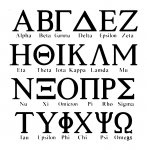I pulled the flywheel and found a magnet busted, so I replaced it and stator with one's from another engine. I now have a 29 reading from stator. I'm not clear where rectified is located. I didn't find anything connected to stator but voltage regulator. Thank you for information and patience.
You are using an out of date browser. It may not display this or other websites correctly.
You should upgrade or use an alternative browser.
You should upgrade or use an alternative browser.
Mr.
- Thread starter jiwatson
- Start date
More options
Export thread
D
(deleted)
Guest
Not really familiar with that unit, i have a 13 year old craftsman 18hp gt and in the spring when grass is thick and juicy i get build up also. not sure it is a problem with the craftsman line just the grass conditions.
bertsmobile1
Lawn Royalty
- Joined
- Nov 29, 2014
- Threads
- 64
- Messages
- 24,702
I pulled the flywheel and found a magnet busted, so I replaced it and stator with one's from another engine. I now have a 29 reading from stator. I'm not clear where rectified is located. I didn't find anything connected to stator but voltage regulator. Thank you for information and patience.
Regulators are found on dynamos.
Rectifiers are found on alternators
A rectifier simply converts AC to DC.
A better quality one has a couple of Zenner diodes in there that dump the power when the voltage gets too high and goes open circuit when the voltage is too low.
A single wire with a diode in it is a rectifier and provides little pulses of power going from 0.001V DC up to whatever voltage the unit is capable of producing then fading away to 0 Volts again.
This is followed by nothing ( because it is the negative cycle ) which is followed by another + pulse and on it goes at infinitum.
4 diodes connected together is a bridge rectifier.
This type flips the - to + so there is no short section of no power.
From there they get more complicated to make the voltage smoother.
the 29 V AC you have is +14.5V to -14.5V and when rectified it would be +14.5 V which is about what you should be getting.
If you measure the voltage from either of the stator wires to ground they should read 14.5V AC
In reality this will end up being just 14 V or a little less due to system losses but should be enough to keep the battery charged and power the PTO.
hrdman2luv
Well-Known Member
- Joined
- Aug 23, 2014
- Threads
- 62
- Messages
- 345
Regulators are found on dynamos.
Rectifiers are found on alternators
A rectifier simply converts AC to DC.
A better quality one has a couple of Zenner diodes in there that dump the power when the voltage gets too high and goes open circuit when the voltage is too low.
A single wire with a diode in it is a rectifier and provides little pulses of power going from 0.001V DC up to whatever voltage the unit is capable of producing then fading away to 0 Volts again.
This is followed by nothing ( because it is the negative cycle ) which is followed by another + pulse and on it goes at infinitum.
4 diodes connected together is a bridge rectifier.
This type flips the - to + so there is no short section of no power.
From there they get more complicated to make the voltage smoother.
the 29 V AC you have is +14.5V to -14.5V and when rectified it would be +14.5 V which is about what you should be getting.
If you measure the voltage from either of the stator wires to ground they should read 14.5V AC
In reality this will end up being just 14 V or a little less due to system losses but should be enough to keep the battery charged and power the PTO.
You're either a genius or greek.

